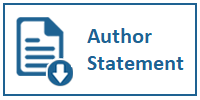Community Movement and Communication for Anticipation of Volcanic Eruption and Covid 19
DOI:
https://doi.org/10.31937/ultimacomm.v14i2.2697Keywords:
Keywords - online community, offline community, social movement, evacuation, COVID-19 pandemic, communication technology, social construction of technologyAbstract
For many years, people are finding ways in anticipating disasters such as volcanic eruptions that happen frequently in Merapi area. Many early warning systems had been installed; however, casualties still took place. This study examined the community's expectations of and responses to disasters, considering the resilience of people in the affected area. Through this research, researcher would like to know how Merapi slope community communicates and anticipates disasters in better way than in the past. The paper analyzes the concept of online and offline communities and the Social Construction of Technology (SCOT) while summarizing recent applications in theory and practice of community movement and communication. The research results showed that this community movement for evacuating refugees spread fast because it was supported by the strong local cultural-based values and social construction in communication technology. This local values also helps significantly during Covid-19 pandemic in 2020. Although the communication within an online community acted as an accelerator, the combination of online and offline communities created a much more responsive, coordinated, and durable social movement. From the theory perspective, the local community engaged in the social construction of technology in using tools for disaster management. A qualitative ethnography approach was used as a research method, and data were collected using in-depth interviews and participatory observation.
Downloads
References
Barnard, F. M. (1966). Metaphors, Laments, and the Organic Community. The Canadian Journal of Economics and Political Science, 32(3), 281. doi:10.2307/139988
Bean, J.P.(2020). "Indonesia's ‘new normal' a disaster in the making.” Available at https://asiatimes.com/2020/06/indonesias-new-normal-a-disaster-in-the-making, accessed January 11, 2021
Bijker, W.E, Hughes, TP and Pinch, T (Ed.). (1987). "The Social Construction of Technology System” Massachusetts Institute of Technology.
Bijker, W.E. (1995). "Of bicycles, bakelites and bulbs: Toward a theory of socio-technical change, inside technology.” Massachusetts: MIT Press.
Dimitruk, P (2007). "Disaster management: using Internet-based technology,” Healthcare Financial Management. (Vol. 61, Issue 1)
Faas, A.J. and Marino, E.K. (2020), "Mythopolitics of "community”: an unstable but necessary category,” Disaster Prevention and Management, Vol. 29 No. 4, pp. 481-484.
Flew, T (2005) "New Media: an introduction,” (2nd ed.), Oxford University Press
Fox, S. (2004). The New Imagined Community: Identifying and Exploring a Bidirectional Continuum Integrating Virtual and Physical Communities through the Community Embodiment Model (CEM). Journal of Communication Inquiry, 28(1), 47–62. doi:10.1177/0196859903258315
Gautam, D., Prajapati, J., Paterno, K.V. et al. (2016) Disaster resilient vernacular housing technology in Nepal. Geoenviron Disasters 3, 1.
Hills, J. M., Îœichalena, E., & Chalvatzis, K. J. (2018). Innovative technology in the Pacific: Building resilience for vulnerable communities. Technological Forecasting and Social Change, 129, 16–26.
Humphreys, Lee (2005) "Reframing Social Groups, Closure, and Stabilization in the Social Construction of Technology” , Social Epistemology: A Journal of Knowledge, Culture and Policy, 19:2-3, 231-253, DOI: 10.1080/02691720500145449
Korkmaz, K.A. (2010). "Integrated seismic hazard evaluation and disaster management approach for Turkey,” Environmental Earth Sciences, page 467-476
Kuppuswamy, S (2012), "Usage of Media in Disaster Preparedness: With Reference to Coastal Disasters in Chennai Tamil Nadu, India.” Asian Journal of Environment and Disaster Management
Levy, P. (1997). Virtual communities and information services: an overview. VINE, 27(5), 3–9. doi:10.1108/eb040660
Lievrouw, L. A. a. S. L. (2002). "Handbook of New Media: Social Shaping and Social Consequences of ICT.” Sage Publications.
Martinez, C. (2010). "The Power Within the Users: A Social Construction Analysis of the E-Mexico Web Portal.” Georgetown University, Washington DC.
Mirlohi Falavarjani, S. A., Zarrinkalam, F., Jovanovic, J., Bagheri, E., & Ghorbani, A. A. (2019). The reflection of offline activities on users' online social behavior: An observational study. Information Processing & Management, 56(6), 102070. doi:10.1016/j.ipm.2019.102070
Mackenzie, D and Wacjman, J (1985). "Social Shaping of Technology,” (1st ed), Redwood Books, Trowbridge
Patton, M. Q. (2002). "Qualitative Research & Evaluation Method.” (3rd ed.). Sage Publication.
Materia, V. C., Giarè, F., & Klerkx, L. (2014). Increasing Knowledge Flows between the Agricultural Research and Advisory System in Italy: Combining Virtual and Non-virtual Interaction in Communities of Practice. The Journal of Agricultural Education and Extension, 21(3), 203–218. doi:10.1080/1389224x.2014.928226
Nip, J. Y. M. (2004). The Relationship between Online and Offline Communities: The Case of the Queer Sisters. Media, Culture & Society, 26(3), 409–428. doi:10.1177/0163443704042262
Prihtiyani, E. and Sarwindaningrum. (2010). "Getaran Gempa di Museum Merapi” [Electronic Version], Feb 6, 2010. accessed May 5, 2011,
Rheingold, Howard (2000). The Virtual Community: Homesteading on the Electronic Frontier, MIT Press
Tomassi, I. and Forino, G. (2019). "The Ecovillage of Pescomaggiore (L'Aquila): Birth and death of a self-determined post-disaster community (2009-2014)” Disaster Prevention and Management Journal Vol. 28 No. 4, pp. 513-526.
Van Dijk, Jan, 2006. The Network Society, Sage Publications, 2nd Ed, pp 166
Velev, Dimiter, Member, IACSIT, and Plamena Zlateva. (2012) "A Feasibility Analysis of Emergency Management with Cloud Computing Integration.” International Journal of Innovation, Management and Technology, Vol. 3, No. 2
Waldron, J. (2012). YouTube, fanvids, forums, vlogs and blogs: Informal music learning in a convergent on- and offline music community. International Journal of Music Education, 31(1), 91–105. doi:10.1177/0255761411434861
Zhang, S., Jiang, H., & Carroll, J. M. (2011). Integrating online and offline community through facebook. 2011 International Conference on Collaboration Technologies and Systems (CTS). doi:10.1109/cts.2011.5928738
Downloads
Published
How to Cite
Issue
Section
License
Ultimacomm Jurnal Ilmu Komunikasi allows readers to read, download, copy, distribute, print, search, or link to its articles' full texts and allows readers to use them for any other lawful purpose. The journal allows the author(s) to hold the copyright without restrictions. Finally, the journal allows the author(s) to retain publishing rights without restrictions
1. Authors are allowed to archive their submitted article in an open access repository
2. Authors are allowed to archive the final published article in an open access repository with an acknowledgment of its initial publication in this journal














